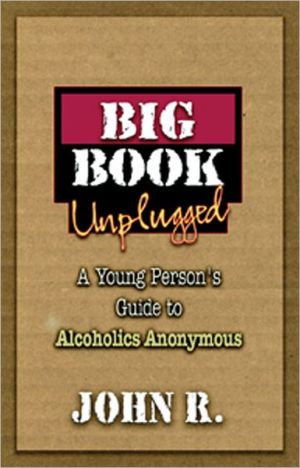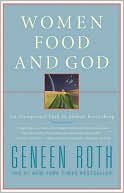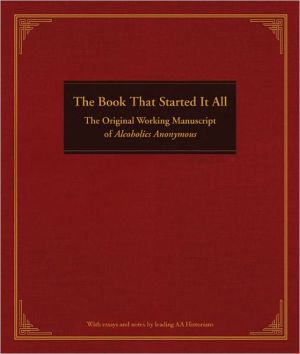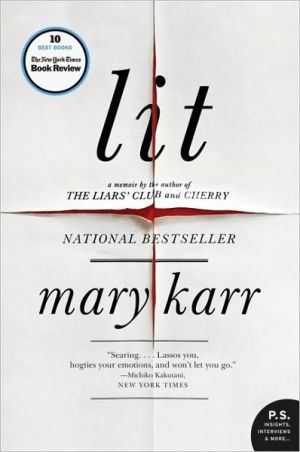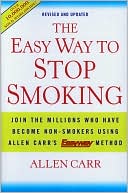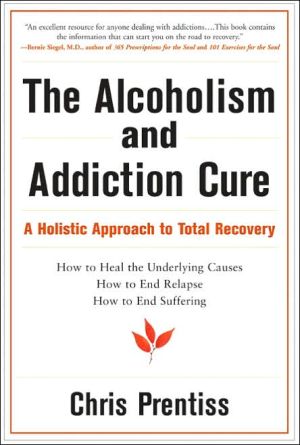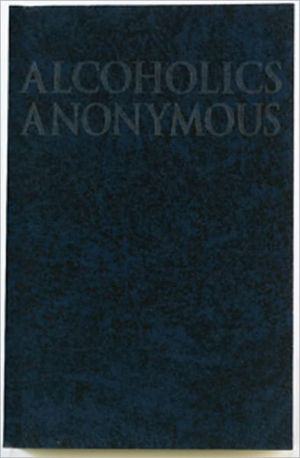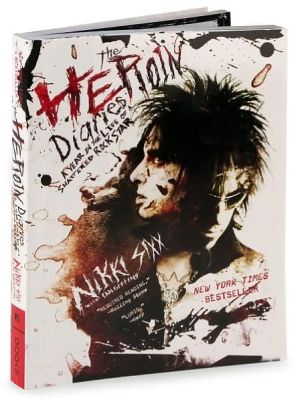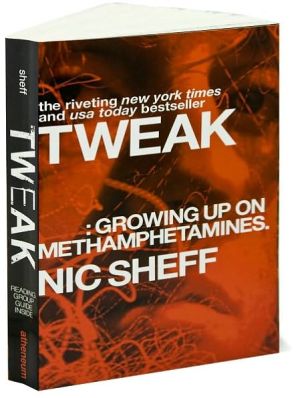Big Book Unplugged: A Young Person's Guide to Alcoholics Anonymous
What does a teen addicted to, say, marijuana, have in common with an adult alcoholic from almost 70 years ago? Plenty, according to The Big Unplugged. This book helps youth find common ground in Alcoholics Anonymous-a book which may sometimes seem remote to today's teens. The author summarizes each chapter of the Big Book, and in fresh, frank language, addresses issues faced and roadblocks erected by teens¿invincibility, surrender, spirituality, and more.
Search in google:
What does a teen addicted to, say, marijuana, have in common with an adult alcoholic from almost 70 years ago? Plenty, according to The Big Unplugged. This book helps youth find common ground in Alcoholics Anonymous-a book which may sometimes seem remote to today's teens. The author summarizes each chapter of the Big Book, and in fresh, frank language, addresses issues faced and roadblocks erected by teens¿invincibility, surrender, spirituality, and more. Publishers Weekly The author, a chemical dependency counselor, is a member of Alcoholics Anonymous with more than 20 years of sobriety. He has targeted this guide specifically toward teenagers and young adults in recovery from alcohol and drug addiction, with the hope of demystifying the basic text for young people who may be put off by the length or language. Alcoholics Anonymous, more familiarly called The Big Book, was published in 1939 and is now in its fourth edition. The Big Book describes the basic AA 12-step program, including the personal story of Bill W., credited with founding AA. In this clearly written manual, John R. devotes an interpretive chapter that corresponds to each of the 11 chapters in The Big Book. Although many of the chapters will be useful to adolescents in recovery, chapter four, "We Agnostics," will be particularly helpful to those who are uncomfortable with AA's spiritual component. John R. includes eight personal stories of recovering alcoholics from the 42 in the original text that, according to him, speak most directly to young people. He strongly suggests reading a chapter or a personal story in The Big Book before turning to the guide for assistance with the meaning or information provided. In addition to those in recovery, this guide will also be useful to their family, friends, counselors and teachers. (Sept.) Copyright 2003 Reed Business Information.
Chapter 2\ THERE IS A SOLUTION\ Alcoholism is the only disease that tries to convince you that you don't have it.\ So what's the purpose of the Big Book? It's simple: The Big Book provides solutions to what we couldn't fix. It tells us how to recover from the seemingly hopeless condition of addiction. Our own efforts at fixing things didn't work. Yet, this chapter promises that we're capable of taking steps that will work.\ Even though the Big Book was written decades ago, its advice still holds true today. It has stood the test of time. The solutions offered in the Big Book work for people of all ages and all walks of life. They formed the foundation of the AA Fellowship.\ Radical Thinking\ The authors call alcoholism an illness in chapter 2. That was radical thinking sixty years ago when the book was written. Back then, society viewed an alcoholic as a moral failure. Alcoholism was treated with ignorance and misunderstanding. Thankfully, much has changed. Today, many people know alcoholism or drug addiction is a disease. Like other diseases, alcoholism can be passed down in families. Likewise, alcoholics and addicts need medical treatment.\ The solution to recovery remains the same now as years ago. Even with the advance in society's attitudes, no one understands the addict better than another addict. Perhaps that's because our illness is unlike other illnesses. It tends to hurt and anger those around us rather than stir up sympathy and compassion. We need that special understanding offered by other addicts, or our fellows. Those who have found "the solution" can usually "get through" to using alcoholics or addicts because they understand in a way few others can. That's the bond upon which our Twelve Step Fellowship is based and by which the message spreads.\ Chapter 2 tells us that at some point addicts can no longer stop drinking or drugging once they've taken that first drink or hit. They've lost control. The drugs now control them.\ Willpower won't work. Our resolve isn't strong enough. Staying clean can't happen through some trick of the mind. The addiction is too powerful, and we lose the power of choice.\ \ The disease seems to invade every fiber of our being, infecting us even when we're straight. Despite a string of negative consequences and every good reason to quit, we persist:\ \ \ \ \ \ We drink to get drunk; we use to get high.\ \ Our personality changes when intoxicated.\ \ We have a "positive genius" for getting wasted at just the wrong moment.\ \ We become dishonest and selfish.\ \ We protect our supply.\ \ Yet, most of us were not ready to give up alcohol and drugs. We tried to find some trick to drink or use without the consequences. We've got a name for that too: denial.\ Why do addicts act like this? Why, when they know from experience the problems that using causes, do they use again?\ That's the wrong question. We can't answer it. Truth be told, most of us have no idea why we kept using.\ The better question is, "What do I have to do to recover from this seemingly hopeless condition?" That's where the solution comes in.\ Simple, but Not Easy\ By now, you're no doubt asking, what the heck is this "solution" they keep talking about?\ It's simple. The solution is to change. Through a spiritual experience, we overhaul our way of looking at and being in the world. We surrender our plans and submit to God's will. We turn from self-centeredness and begin a life of service to others.\ It's simple, but not easy. At first, most didn't like the requirements—self-searching, leveling of pride, confession of shortcomings. Since our way hadn't worked, we were willing to try it, especially when we saw how it had worked for others.\ Basically, it came down to two choices:\ \ \ \ follow our addiction to its bitter end, which meant insanity, incarceration, or death, or\ \ accept spiritual help.\ \ There was no middle road or shortcut. It was drink until we dropped, or surrender. Stay with the problem, or embrace the solution.\ The solution, we found, was nothing short of a miracle, especially considering our doubts. Surrendering to God brings relief. God can do for us what we could never do by ourselves.\ Not only has God liberated us from our addiction, God has given us the grace to change our attitude and approach to life. Cutting out the drugs is just the beginning. The solution lies in applying the principles we've discovered to every aspect of our lives. (More on these principles and working the Steps in later chapters.) The solution is more than a means to quit using, it's a "design on living."\ This design is drawn from the paradox that we cannot keep what we have unless we give it away. In helping others, we help ourselves. Service, particularly helping the addict who is still suffering, becomes the foundation of sobriety. In fact, our very lives depend on helping others. That gives our lives purpose. And it keeps us sober.\ Instead of looking out for ourselves, we try to be useful to others. We talk to other addicts about what we know. We share our own painful experience with others who need to know they aren't alone. That can give our lives purpose. And it keeps us sober.\ More God Stuff\ So what's with the spiritual experience? Chapter 2 defines a spiritual experience as a new way of looking at life. We throw away old ideas and attitudes that hurt us and others.\ Appendix 2, in the back of the Big Book, further describes what the authors mean by a "spiritual experience." Some people had sudden, dramatic spiritual experiences. But most people had slow, subtle transformations. Sometimes they happened so slowly that others spotted the changes before the individual was even aware of them. Eventually the individual realized that he or she no longer carried the old outlook.\ These positive changes didn't occur solely through the individuals' efforts. God did for them what they couldn't do for themselves. Slowly, surely, they were transformed into happy people. Tapping into this resource—this Power greater than themselves—is the essence of spiritual experience.\ The authors of the Big Book say that religion alone won't supply this vital spiritual experience. They also stress that there are many ways to tap into the spiritual source. Just as there are many paths up the same mountain, there are many ways to discover a Higher Power. The key is to be open and willing.\ In fact, willingness, honesty, and open-mindedness are the keys to recovery. Willingness, honesty, and open-mindedness unlock a whole new life.\ The Big Book also offers hope. We can experience a new life if we do these things:\ \ \ \ face our problems honestly\ \ keep our minds open to spiritual concepts\ \ beware of attitudes of intolerance and denial\ \ Remember, sometimes the answers to our problems don't come in the form we expect. And sometimes we may be looking for ways to keep using. So be honest about your motives. And be willing to accept the help of other recovering people.\ \ ¬2003. All rights reserved. Reprinted from Big Book Unplugged by John R. No part of this publication may be reproduced, stored in a retrieval system or transmitted in any form or by any means, without the written permission of the publisher. Publisher: Hazelden, Center City, Minnesota, 55012-0176.
\ Publishers WeeklyThe author, a chemical dependency counselor, is a member of Alcoholics Anonymous with more than 20 years of sobriety. He has targeted this guide specifically toward teenagers and young adults in recovery from alcohol and drug addiction, with the hope of demystifying the basic text for young people who may be put off by the length or language. Alcoholics Anonymous, more familiarly called The Big Book, was published in 1939 and is now in its fourth edition. The Big Book describes the basic AA 12-step program, including the personal story of Bill W., credited with founding AA. In this clearly written manual, John R. devotes an interpretive chapter that corresponds to each of the 11 chapters in The Big Book. Although many of the chapters will be useful to adolescents in recovery, chapter four, "We Agnostics," will be particularly helpful to those who are uncomfortable with AA's spiritual component. John R. includes eight personal stories of recovering alcoholics from the 42 in the original text that, according to him, speak most directly to young people. He strongly suggests reading a chapter or a personal story in The Big Book before turning to the guide for assistance with the meaning or information provided. In addition to those in recovery, this guide will also be useful to their family, friends, counselors and teachers. (Sept.) Copyright 2003 Reed Business Information.\ \
